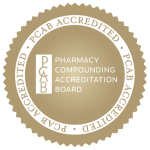An astounding amount of scientific evidence shows that burnout takes a profound mental, emotional and physical toll on many professionals, but more so on the ones in executive positions. The toll of exposure to chronic psychosocial stress cascades well beyond the professional lives into personal lives and social functioning. Integrative research groups with access to modern and sophisticated technologies are demonstrating that burnout is not just a state of mind, but a condition that leaves its mark both on the brain as well as on the body.
Burnout results in noticeable changes in the anatomy and functioning of the brain with manifestation in affected cognitive skills and neuroendocrine system.
Burnout is now a recognized and accepted medical condition and many of its symptoms can mimic depression associated with extreme fatigue, loss of zest for life, increasing negativity, lower sense of worth, etc.
Some of its demonstrated effects on the anatomy of the brain are:
- The frontal cortex – a brain area essential to cognitive function shows a more pronounced thinning in burnout patients compared to normal controls.
- Burnout patients appear to have larger amygdalae and shrinking in the caudate.
- Burnout is linked with significant reductions in gray-matter volumes in the hippocampus, caudate, and putamen — structures known to be susceptible to neurotoxic changes arising from the excessive release of glutamate.
- Damage to neuronal circuits in burnout patients is similar to the ones who had early-life traumatic experience.
Clinical manifestations of these structural changes in the brain differ from one individual to another, but they are generally related to focus, attention span, memory, etc.
Continuous stress dysregulates the neuroendocrine system. The first hormone disrupted is the cortisol – also known as “the stress hormone”. Cortisol levels will continue to grow to keep up with the stress all the way to exhaustion – which is also known as adrenal burnout. But cortisol is not the only hormone that goes out of balance. It triggers a whole chain of disruptions that involve many other hormones and neuro-signaling chemicals, creating havoc in the body.
At this stage, it is very difficult to re-establish balance and harmony. When possible, it will take patience, education and perseverance to get back to a healthy state.
It is better to acknowledge the possibility of burnout before it happens and take the necessary precautionary steps.
- Make time for yourself – love your body, your mind and your soul. Do something for each of them before they let you down.
- Make time for your family – it is your most precious asset (after you!). Spend quality time as much as you can
- Make time for friends – have a social life! Relax and participate in fun activities you enjoy
- Exercise in moderation to maintain a healthy body – “mens sana in corpore sano”
- Incorporate a form of meditation into your daily routine to stay connected with yourself
- Try to eat healthy most of the times
- Last, but not least – add supplements to your diet to help prevent burnout
Here’s a suggestion:
Rx: Ginsenoside Rg3
Nicotinamide Riboside
Methylcobalamyn
Nasal Spray
Ginseng is known for centuries for its beneficial effects fighting fatigue and stress. It is known and used as an adaptogen supplement.
Ginsenoside Rg3 is a triterpene saponin – component of ginseng – abundantly present in Korean Red Ginseng and it is known for its unique mode of action in modulating various signaling cascades and networks in different tissues, having multiple pharmacological efficacies to neuronal, cardiovascular, and immune systems, and have neuroprotective, anticancer, and antidiabetic activities. Laboratory studies report that Rg3 extracted from Panax ginseng supports neuroprotection, aids in supporting healthy microglial activity and healthy neuronal function.
Nicotinamide Riboside (NR) – a form of vitamin B3 – acts as a NAD (nicotinamide adenine dinucleotide) precursor vitamin. Several recent studies show that NR supplementation augments the NAD bioavailability, synthesis and metabolism. NAD appears to improve cardiovascular and many other physiological functions related to aging process in humans. NAD activates sirtuins, which are important regulators of metabolism and longevity. It can also help generate energy in mitochondrial-dense tissues like muscle, brain, and liver.
Proper NAD metabolism can help protect the brain. NR protects the nerve cells in the brain by activating the SIRT3 (R) and PGC1a (R) pathways. NR can also delay axonal degeneration, which can preserve nerve cells. NR may have a role in improving cognitive function, and slowing progression of Alzheimer’s disease.
Methylcobalamin – is a long-known form of vitamin B12 for its multiple benefits for health. Because this form is easily bioavailable, it is the most functional B12 supplement. Among many other functions, Methylcobalamin – as the only form of B12 that can cross the blood-brain barrier without assistance or conversion – stimulates serotonin production, a neurotransmitter responsible for mood support. It also works directly on brain cells to protect against damage from excitotoxins. Recent studies showed that large doses of methylcobalamin may offer therapeutic value for those suffering from ALS and multiple sclerosis.
These are only a few highlights of the potential benefits of the ingredients when combined in this proprietary formulation, specifically for patients with burnout syndrome.
Even though it is a combination of supplements, it will require a prescription from a health care practitioner, because it is available only through a compounding pharmacy.
For more information about this formulation and many other options, please contact a reliable compounding pharmacy.
Choose HALDEY Pharmaceutical Compounding for your practice’s needs in providing customized treatment options for your patients. Talk to one of our experienced compounding pharmacists for an evaluation.
References:
Blix, E., Perski, A., Berglund, H., & Savic, I. (2013). Long-term occupational stress is associated with regional reductions in brain tissue volumes. PLOS ONE 8: e64065. doi: 10.1371/journal.pone.0064065
Deligkaris, P., Panagopoulou, E., Montgomery, A. J., & Masoura, E. (2014). Job burnout and cognitive functioning: A systematic review. Work & Stress, 28, 107–123. doi:10.1080/02678373.2014.909545
Golkar, A., Johansson, E., Kasahara, M., Osika, W., Perski, A., & Savic, I. (2014). The influence of work-related chronic stress on the regulation of emotion and on functional connectivity in the brain. PLOS ONE 9: e104550. doi: 10.1371/journal.pone.0104550
T.T. Hien, N.D. Kim, Y.R. Pokharel, S.J. Oh, M.Y. Lee, K.W. KangGinsenoside Rg3 increases nitric oxide production via increases in phosphorylation and expression of endothelial nitric oxide synthase: essential roles of estrogen receptor-dependent PI3-kinase and AMP-activated protein kinase Toxicol Appl Pharmacol, 246 (2010), pp. 171-183
- Wang, Z. Hu, B. Sun, J. Xu, J. Jiang, M. LuoGinsenoside Rg3 attenuates myocardial ischemia/reperfusion injury via Akt/endothelial nitric oxide synthase signaling and the B-cell lymphoma/B-cell lymphoma-associated X protein pathway Mol Med, 11 (2015), pp. 4518-4524
- Wang, X. Li, Y.M. Song, B. Wang, F.R. Zhang, R. Yang, H.Q. Wang, G.J. ZhangGinsenoside Rg3 sensitizes human non-small cell lung cancer cells to γ-radiation by targeting the nuclear factor-κB pathway Mol Med Rep, 12 (2015), pp. 609-614
Bieganowski, P., & Brenner, C. (2004). Discoveries of nicotinamide riboside as a nutrient and conserved NRK genes establish a PreissHandler independent route to NAD+ in fungi and humans. Cell, 117(4), 495-502. Retrieved from http://www.cell.com/cell/pdf/S0092- 8674(04) 00416-7.pdf
Chi, Y., & Suave, A. A. (2013). Nicotinamide riboside, a trace nutrient in foods, is a vitamin B3 with effects on energy metabolism and neuroprotection. Current Opinion in Clinical Nutrition and Metabolic Care, 16(6), 657-661. https://doi.org/10.1097/ MCO.0b013e32836510c0
Kikuchi M, Kashii S, Honda Y, et al. “Protective effects of methylcobalamin, a vitamin B12 analog, against glutamate-induced neurotoxicity in retinal cell culture.” Invest Ophthalmol Vis Sci. 1997 Apr;38(5): 848-54
Izumi Y1, Kaji R. “Clinical trials of ultra-high-dose methylcobalamin in ALS.” Brain Nerve. 2007 Oct;59(10):1141-7.
Kira J1, Tobimatsu S, Goto I. “Vitamin B12 metabolism and massive-dose methyl vitamin B12 therapy in Japanese patients with multiple sclerosis.” Intern Med. 1994 Feb;33(2):82-6.




